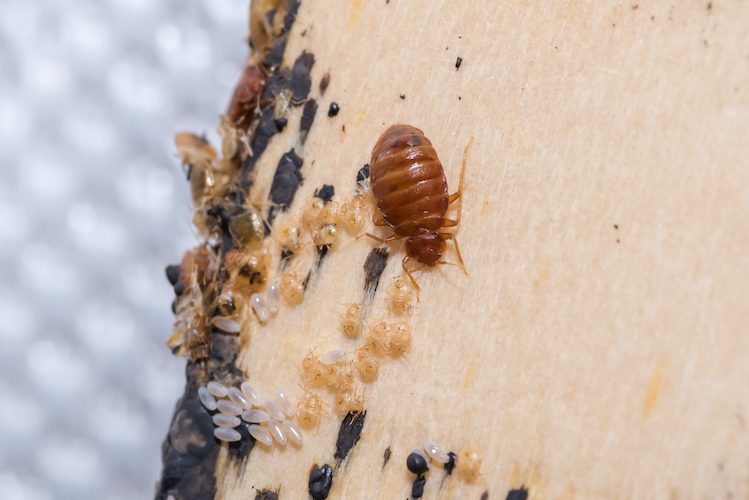What do bed bug skins look like? The molting of the skin is a process called ecdysis. It occurs in the Nymph stage of the bed bug’s life cycle. This nymph stage is accompanied by five maturing stage with each stage leading to molting by the young bed bugs. Here is all the info you need to spot discarded bed bug skins in your home.
Bed bug discarded skins share similarities with a lie bed bug. The significant difference is that a shed skin looks empty, stationary and almost translucent. Many skin sheds do not usually accompany a new infestation because adult bed bugs do not molt. But as the infestation grows old, eggs and Nymphs are produced, and this leads to the formation of shed skins scattered across your bed or room.
The slow decomposition of bed bugs skin means you can easily spot the skin than actual bed bugs. Baseboards, box springs, mattresses, and beddings are places you can potentially find bed bug skins.
What do bed bug skins look like? Depending on the life stage the size of the bed bug varies
Bedbugs egg measure up to 1mm
- First stage instar nymph measures up to 1.5mm
- Second stage instar nymph measure up to 2mm
- Third stage instar nymph measure up to 2.5mm
- Fourth stage instar nymph measure up to 3mm
- Fifth stage instar nymph measure up to 3.5mm
How often do bed bugs shed?
The shedding process of bed bugs only occurs after feeding during five nymph stages of their lives. Shedding occurs as a result of the expansion of body size. The availability of food, temperature, and ideal conditions a typical nymph stage will last a week. If the conditions are hostile and there is a lack of food, feeding shedding takes a longer time.
What to do with a bed bug shedding
When you spot any bed bug skins, contact a pest control management to get rid of the skins for you and carryout and extensive inspection of the area. Read More…




